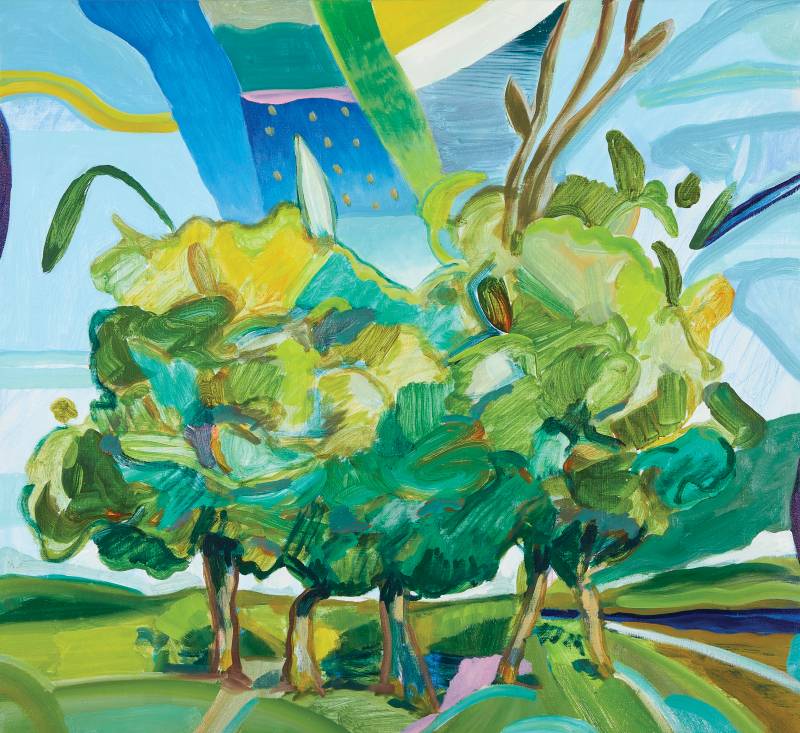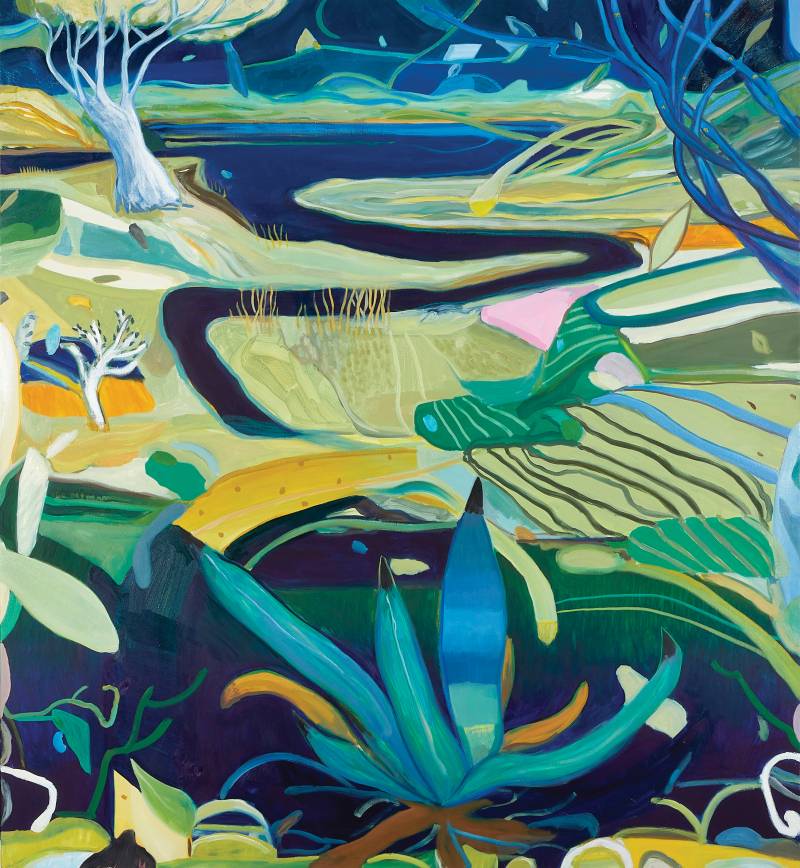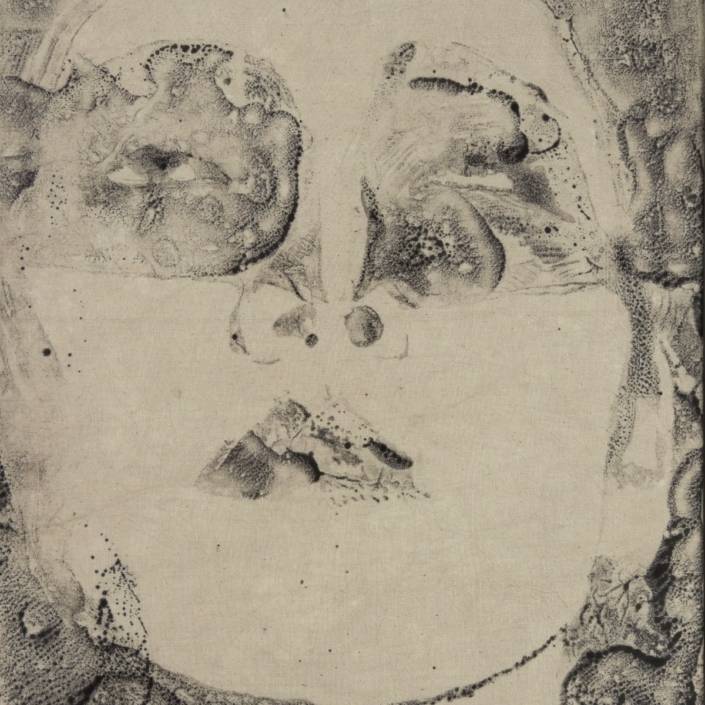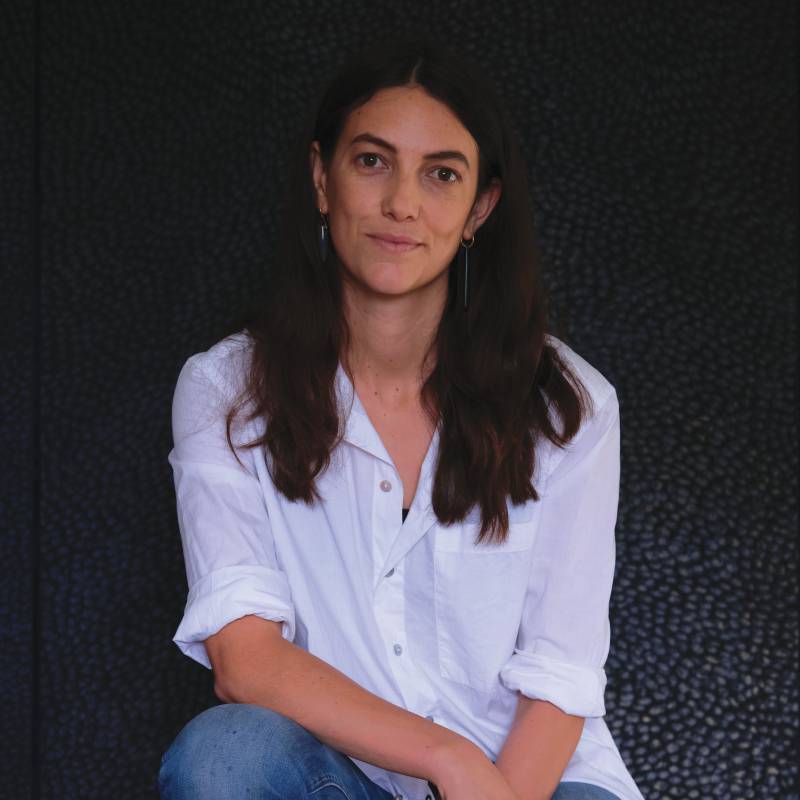Collectors Love: Myles Young
With sell-out shows in 2021, these artists were clearly collector favourites of the year.
Words: Sharne Wolff
When I ask Myles Young about what inspired the dash of candy pink – a frequent device in his recent paintings – he’s not totally sure. While it may be a subconscious link to the bright pink chair in his studio, it also alludes to something unnatural in the landscape and points to the digital process behind the work’s creation.
Often inspired by a photograph or object, but generally without a firm plan, Young’s pictures start life as a digital sketch. Using computer software, Young draws intuitively, starting with the background before adding multiple layers – shapes, marks, mistakes – to build the picture. He then “lets the drawings go” until they are resolved enough to be painted. Eventually, the original drawing becomes unrecognisable in the process.
A finalist in the 2018 and 2019 Brett Whiteley Travelling Art Scholarship, Young has continued to build career success with his selection in this year’s Paddington Art Prize and a solo exhibition Living Landscapes shown at Olsen Gallery, Sydney in March 2021. In Living Landscapes, four paintings titled Hive centred a group of lush green trees in unfamiliar places. In other works, the viewer’s eye is actively drawn to a deep blue stream that swerves theatrically toward the top of the frame. Among this wealth of colour, Young’s loaded backgrounds and lyrical gestures signify that there is a lot going on. Exactly what remains a mystery.
Young’s imagined landscapes are not reminiscent of Australia. Hailing originally from Byron Bay, the artist spent his youth exposed to European art and his interest lies in developing works of a universal nature. Young’s most recent paintings shown online by Brisbane’s EDWINA CORLETTE for Explore Sydney Contemporary lean further toward this idea.
Benjamin Clay, gallery manager at Olsen Gallery reports that Living Landscapes sold through on the first day of the online preview period. “By 5pm, the ten paintings had either been snapped up or placed on hold by clients,” he says, “with some attracting a three-to-four-person waitlist”. Clay suggests that Young’s work is “reconsidering the objective of landscape painting, prioritising in his works the experiential, rather than the purely visual. The artist looks not only at the surface of things, but at their microscopic workings and movements over time. Young’s practice has gradually attracted the attention of wider and wider audiences, collectors enchanted by his bustling compositions. In particular, the recent paintings have appealed to those wanting to acquire less traditional pictures, but ones that retain a trace of their locality and an impression of the natural world around.”
Young will show work with EDWINA CORLETTE, Brisbane in 2022.
Featured image above: Myles Young, Hive 2, 2021. Oil and acrylic on polycotton, 51 x 56cm. Courtesy: the artist and Olsen Gallery, Sydney
Featured image below: Myles Young, Night Party, 2021. Oil and acrylic on polycotton, 122 x 112cm. Courtesy: the artist and Olsen Gallery, Sydney
This article was originally published in Art Collector issue 99, January-March 2022.












